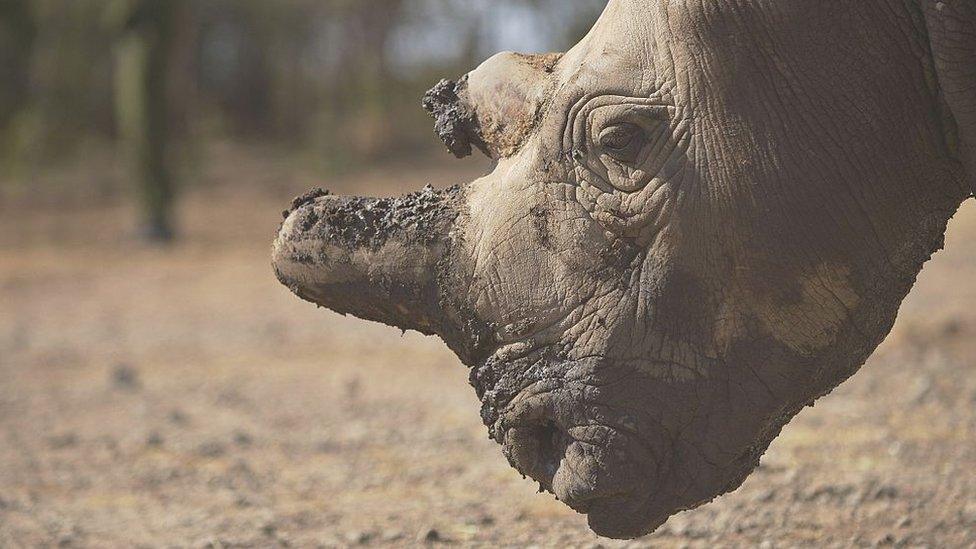COP15: Meeting to tackle threat of extinction for one million species
- Published
- comments

One of the last remaining rhinos of its kind
Nearly 200 countries will meet in Montreal in Canada this week to come up with a plan to protect the world's one million species threatened with extinction.
The meeting, sometimes called COP15, because it's the 15th 'conference of parties' is taking place nearly three years later than originally planned, due to delays caused by the Covid pandemic.
The delay has left the world without targets - designed to stop animal extinctions and reverse a global loss of nature.
What is happening?
The vast majority of lemur species, unique primates found only in Madagascar, are on the brink of extinction
The conference, which runs from 7 December to the 19 December, will bring together representatives from the 196 countries.
Not to be confused with the United Nation's climate change conference - COP27 - which took place in Egypt a few weeks ago, with the aim of reducing global temperatures.
In Canada, COP15 negotiations are looking at a set of 23 nature targets aimed at halting and reversing "biodiversity loss by 2030".
Biodiversity is a measure of how many different species live in an ecosystem. Human activities like changing land use, deforestation and peat bog destruction reduce this.
Areas like tropical rainforests have millions of different species and are very biodiverse. Other areas like the Polar Regions have far fewer species and are less biodiverse.
Biodiversity refers to all the different living things on Earth, animals, plants, habitats such as rainforests and how they all fit together.
Climate change and other factors such as humans clearing land for buildings, are leading to a decline in numbers of animals, plants, and other species.
It's estimated that three-quarters of the world's land surface and 66 percent of its oceans had been significantly altered by human activity.
'Sustaining the web of life'
Habitat loss is one of the biggest threats to nature
The head of the government nature agency, Natural England, says countries must come together and agree to a plan.
"This isn't just about saving rare species," said Tony Juniper.
"It's about sustaining the web of life upon which humankind ultimately depends, for food, water, health and climate regulation."
What are the meeting's aims?
The outcome of the meeting will decide how the world will try to tackle the challenges of reducing the extinction risk of more than one million species, while protecting 30% of land and sea and repairing damaged ecosystems.
The aim is to achieve this by 2030, but some conservationist have said the target is "unrealistic" and to achieve this, 80 years is more likely instead of just eight.
Critics of the summit have previously said negotiations move too slowly and targets set are not realistic enough.
We depend on pollinating insects for our food supplies
The UK government has committed to protecting 30% of land and sea by 2030.
But according to the Wildlife Trusts - which look after nature reserves in the UK, little progress has been made to date, with just 3% of land and 8% of the sea protected so far.
- Published23 October 2022
- Published15 September 2020
